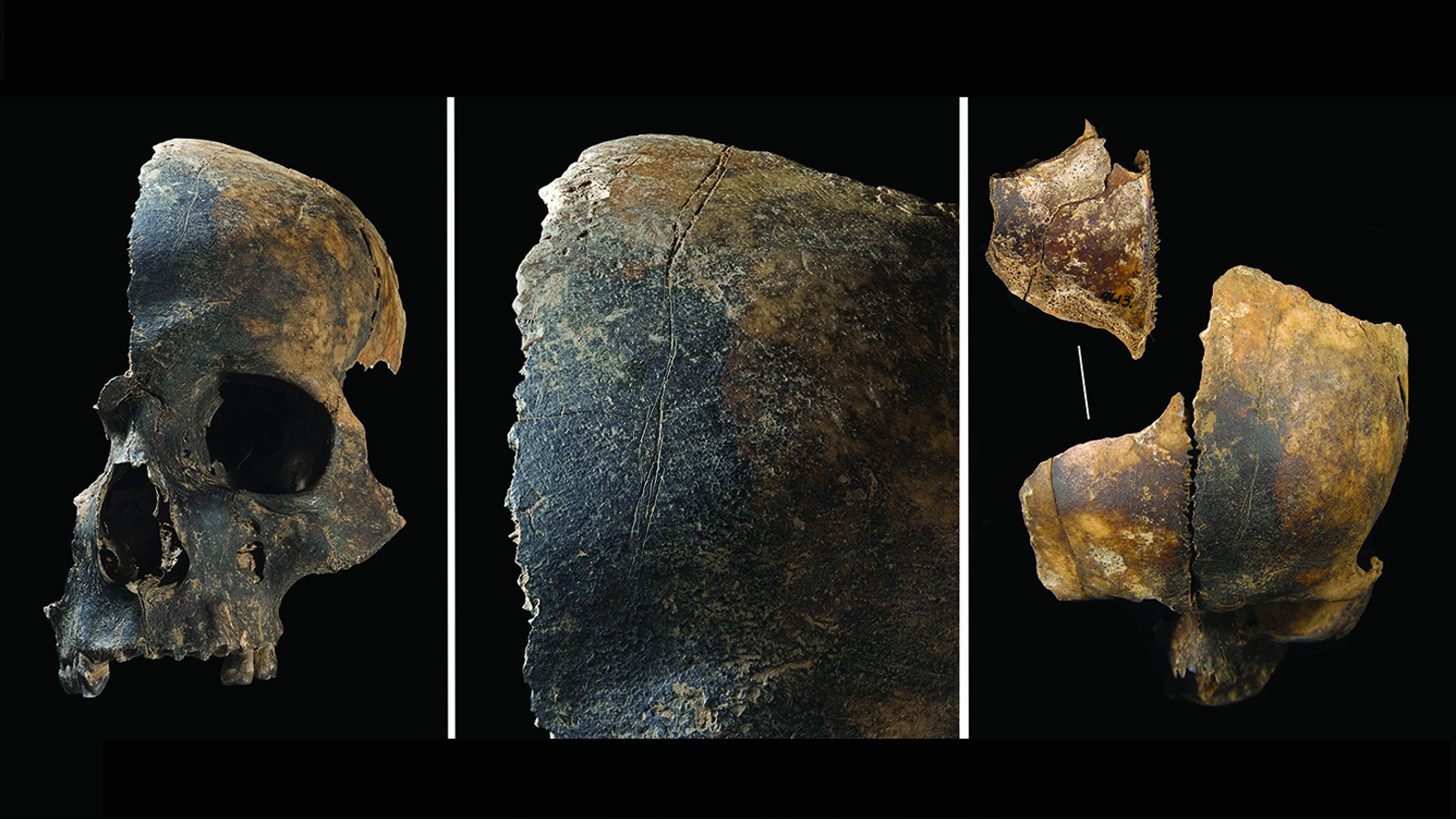
More than 4,000 years ago, nearly 40 people died extremely violent deaths in what is now England, with a modern analysis of their bones revealing scalping, tongue removal, decapitation, defleshing, evisceration and cannibalism.
"It paints a considerably darker picture of the period than many would have expected," Rick Schulting, an archaeologist at the University of Oxford, said in a statement, and it's "a stark reminder that people in prehistory could match more recent atrocities."
Schulting and colleagues published a detailed study of these skeletons Monday (Dec. 16) in the journal Antiquity. They noted that, in the 1970s, archaeologists found more than 3,000 bone fragments in a 66-foot-deep (20 meters) natural limestone shaft at the site of Charterhouse Warren in the county of Somerset in southwest England. At least 37 people, who ranged in age from newborns to adults, were found in the shaft, and radiocarbon dates suggest the people died at least four millennia ago, during the Early Bronze Age (2200 to 2000 B.C.).
Looking closely at the fragmented bones, the research team determined that at least 30% of the skulls had been fractured around the time of death, implying that many — or possibly all — of the people suffered violent deaths. What happened after death was even more gruesome.
Additionally, the researchers found that roughly 20% of the bones had cut marks, most of which had been made with stone tools. The cut marks' locations revealed the kinds of violent actions the dead bodies were subjected to: Cut marks on the frontal bone of one skull suggested scalping, long slicing marks on a lower jaw of another person suggested tongue removal, and cuts on the ribs may be from evisceration, the team said. At least six people had cut marks on their second cervical vertebra, which meant they were decapitated, and a number of small hand and foot bones had crushing fractures consistent with human chewing.
Related: Ritually bent Bronze Age sword unearthed in Danish bog is 'very rare find'

The sheer number of violent deaths and extensive processing of the bodies are extremely unusual for Bronze Age Britain, the researchers noted in their study, and the practices are clearly not related to any known funeral rite.
"The presence of at least 37 individuals suggests the massacre of a substantial segment of a community," the researchers wrote. "In this case, the violence may have continued postmortem," and it is likely that "the aim was to not only eradicate another group, but to thoroughly 'other' them in the process."
But the reason for the brutal mass murder and cannibalism is not clear. The researchers suggested that the level of violence "could indicate that the actions were retaliatory, in response to a previous violent event or the perceived breach of a serious social taboo," meaning the violence was not meaningless but rather an intensely political act.

"The assemblage from Charterhouse Warren definitely shows signs of perimortem [around the time of death] trauma along with numerous tool marks consistent with body processing," Anna Osterholtz, a bioarchaeologist at Mississippi State University who was not involved in the study, told Live Science in an email.
"Violence like this often has a social function," Osterholtz said, because "violent acts, when performed in front of an audience, are important for group identity formation and the negotiation of social relationships." But what the violence tells us about group identity can be gleaned only from archaeological evidence.
One possible clue to the massacre comes from the identification of Yersinia pestis, the bacterium that causes plague, in the teeth of two children found at Charterhouse Warren, the researchers noted. The fact that at least two people had plague when they died "raises the possibility that illness exacerbated a sense of fear in the region," the researchers wrote.
Research on these Early Bronze Age human remains has not been completed. "Work is ongoing to shed more light on this decidedly dark episode in British prehistory," the researchers wrote.







